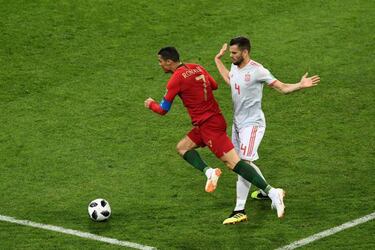Why we have to get used to VAR
The World Cup continues to chug along and between shocks and surprises (Harry Kane avoided another upset last night by scoring a late winner against Tunisia) ...
The World Cup continues to chug along and between shocks and surprises (Harry Kane avoided another upset last night by scoring a late winner against Tunisia) we are gradually getting a clearer idea of what VAR is all about - and it’s important that we do. It’s here to stay so we need to know what its purpose is and in which ways it can serve to help us, which isn’t for everything. So far, it’s helped France more than anyone else. Griezmann has earned himself a footnote in football history because he had the honour of being the first player to be awarded a penalty by VAR and not directly by the referee. We’ve seen the system used sporadically in some leagues, and even in the most recent Club World Cup, but it has only been in these World Cup finals where it has received official authorization.

Not everyone is enthralled with VAR
Related stories
So all well and good for France, who were also the first beneficiaries when they inaugurated Hawk-Eye technology when it was their turn to host the World Cup, with a similar, close call going their way. However, not everyone is as satisfied with the system. Portugal’s players were not happy that Diego Costa’s push on Pepe before Spain’s goal wasn’t reviewed; Brazil's appeal for a push Zuber on Miranda fell on deaf ears and as for Spain, some of us had our doubts about how much contact there was in Nacho's penalty on Cristiano - which the latter made the most of. And last night, an English friend of mine called me, asking why the penalty given to Tunisia wasn’t subjected to trial by VAR – he felt the ref had jumped the gun by making a hasty decision. Any post-match controversy was averted when Kane nodded in the winner in the dying moments.

VAR's use when the ref is unsighted
It’s important to remember that VAR is only an auxiliary tool for match officials to be used in extreme cases – such as when the ref’s view of a move has been obstructed, he will be able to review television images to get a clearer idea of what happened – moves which are ‘not open to interpretation’. If the ref is warned about an incident, it will be for something major which he has missed because it occurred behind his back or when someone was blocking his view. Even then, it is the referee alone who must either accept or discard VAR’s advice before deciding whether to change or stick with his original decision. We could say that VAR gives the ref a lifeline in extreme cases if it is deemed necessary. After that, it’s the ref’s call as to make a definitive decision. In the meantime, we’ll just have to used to the idea of this new system.

